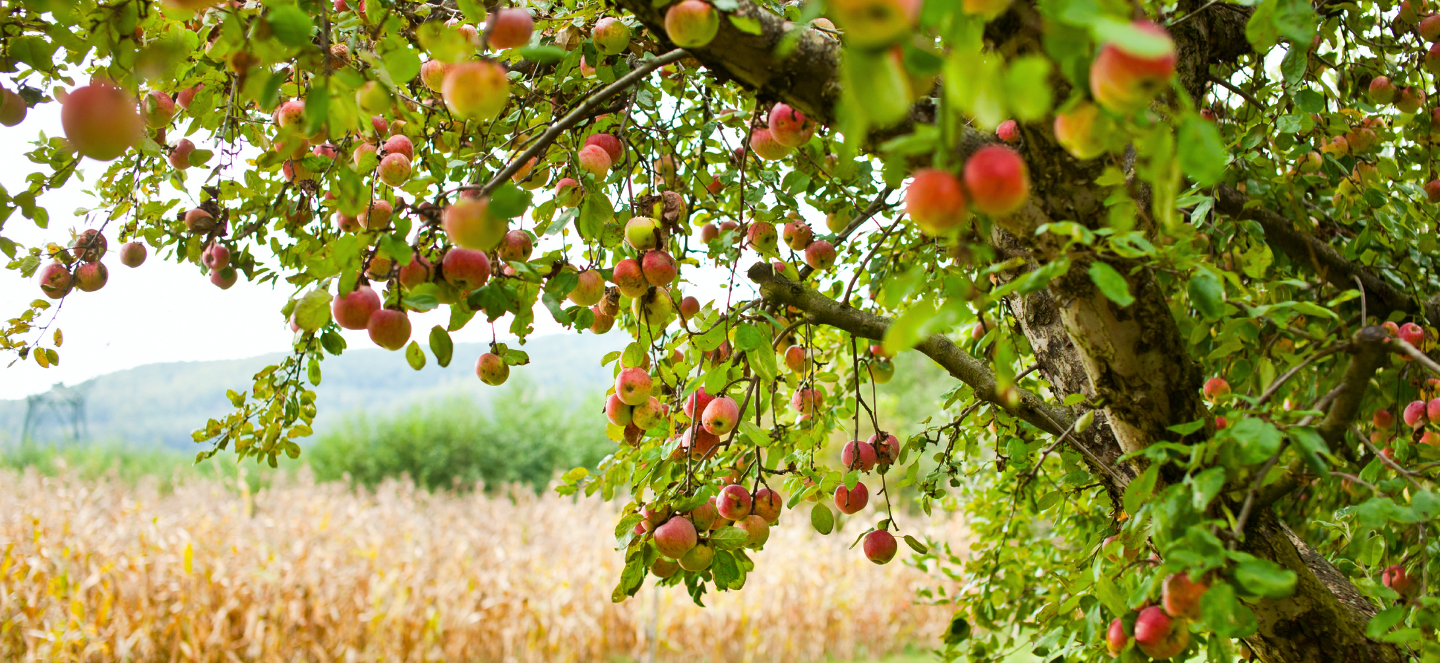Included in the June 19, 2025, biweekly update
This week's articles by MSU faculty, specialists and students making a difference feature AI-powered orchard mapping, soft robotics for pipe inspection, and sustainable solar development.
High-resolution mapping of orchard distribution across Italy
The corresponding author on this article is Bruno Basso, basso@msu.edu.
Lodato et al. (2025) present a new method for mapping orchards across Italy using high-resolution satellite imagery and machine learning. Because identifying specific crops across large, diverse regions can be difficult, the researchers combined data from Sentinel-1 (radar) and Sentinel-2 (optical) satellites with a machine learning classifier (XGBoost) and a statistical Bayesian model. This hybrid approach helps to better classify major perennial crops, such as olives, vineyards, apples, and citrus, even when those crops are scarce or underrepresented.
The researchers built a “data cube” of satellite images from 2021 to 2023, capturing monthly snapshots of Italy’s agricultural areas. They trained the model using more than 169,000 ground reference points and adjusted predictions based on crop distributions in each province; this helped reduce bias toward common crops and improved accuracy for rarer ones like kiwifruit and pears.
The resulting orchard map offered a 10-meter resolution—an improvement over existing European maps like CORINE Land Cover. While the model worked best in regions where crops are grown in large, continuous areas, it struggled in mixed or smaller orchards. The researchers noted that the main challenges were boundary errors between crop types and the model’s tendency to misidentify rare crops as more common ones.
Overall, this study provides a reasonable and cost-effective model for large-scale orchard monitoring that supports sustainable agriculture.
Lodato, F., Jayne, R., Santonico, M., Pollino, M., Bellino, F., De Gara, L., & Basso, B. (2025). “High-resolution mapping of orchard distribution across Italy.” Science of Remote Sensing, 11, 100237. https://doi.org/10.1016/j.srs.2025.100237
A 3D-Printed Worm-Like Robot for Corrugated Pipes Using Anisotropic Fins
The corresponding author on this article is Xiaobo Tan, xbtan@msu.edu.
Luedtke et al. (2025) introduce a soft robotic system designed to navigate narrow, corrugated pipes. The robot was created using 3D-printing and includes a flexible silicone body and angled fins, known as anisotropic fins, to allow for directional friction. These fins help the robot to more effectively move forward while preventing backward slippage, even in vertical or steeply inclined pipes.
The robot moves via pneumatic actuation: air pressure cycles cause it to elongate and contract in a wave-like motion similar to an earthworm. The researchers evaluated the robot’s performance in pipes with diameters as small as 55 mm and tracked its ability to move through horizontal, vertical, and curved sections. The researchers also used a basic mathematical model to perfect the robot’s speed and efficiency.
This study demonstrates how soft, 3D-printed robots can provide solutions for navigating narrow or uneven environments. Its adaptable design makes it well-suited for pipe inspection, infrastructure monitoring, and search-and-rescue operations where traditional systems may be less effective.
Luedtke, C., Zhou, X., & Tan, X. (2023). “A 3D-Printed Worm-Like Robot for Corrugated Pipes Using Anisotropic Fins.” IEEE Transactions on Robotics. https://doi.org/10.1109/TRO.2023.3280819
Current Knowledge on Low-Impact Ground-Mounted Solar Siting, Construction, and Installation Practices
The corresponding author on this article is Jacob Stid, stidjaco@msu.edu.
Stid et al. (2025) review what is currently known about how to build ground-mounted solar projects with less harm to the environment. As the U.S. builds more solar farms, often on open, undeveloped land, concerns have grown about how this affects wildlife, soil, and land use.
The researchers compiled findings from scientific studies, government reports, and industry guidelines, then outlined ways to reduce impact. These include avoiding sensitive habitats when choosing sites, using construction methods that disturb soil and plants as little as possible, and making permitting rules more consistent across regions. While many of these strategies already exist, the researchers note that long-term environmental effects are still not well understood, and better data and monitoring are needed.
This study gives developers, land planners, and policymakers a useful guide for making solar energy growth more sustainable. It underscores the need for smart, careful planning to meet clean energy goals without sacrificing ecosystems in the process.
Stid, J. T., Zipper, S., Szydlowski, H. V., Bingaman, J., Anctil, A., & Kendall, A. D. (2025). “Current knowledge on low-impact ground-mounted solar siting, construction, and installation practices (U.S. Geological Survey Open-File Report 2025–20).” https://www.kgs.ku.edu/Publications/OFR/2025/OFR2025-20.pdf

